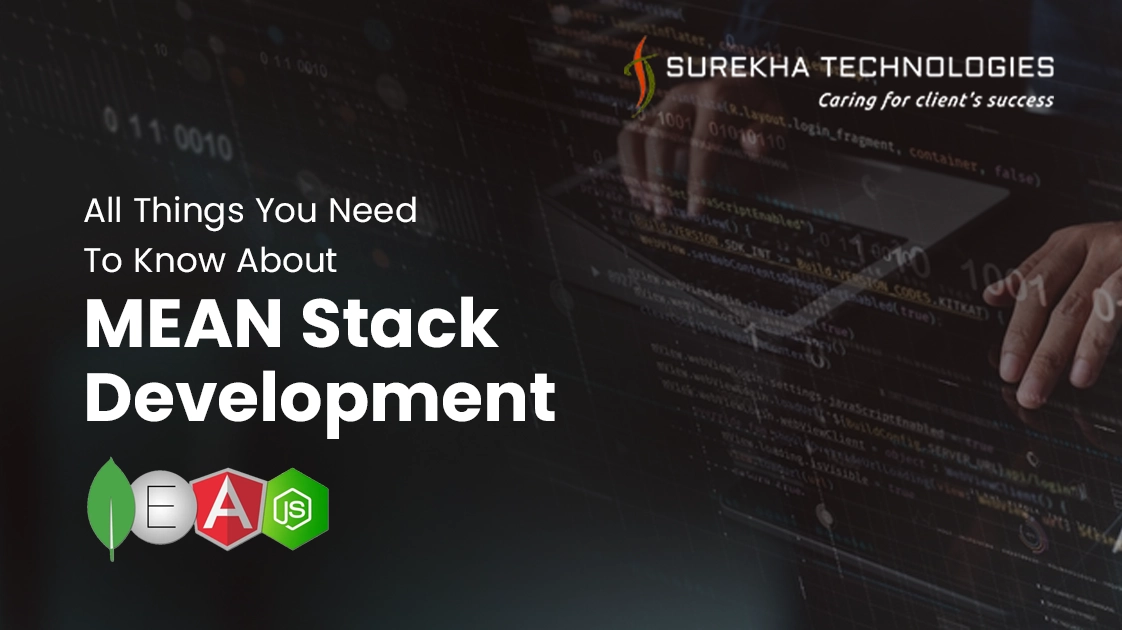In the era of the digital world, mobile and web apps are the most critical part of business success. To develop mobile or web applications, you are going to need means of storing, organizing, and processing data.
Many developers and IT professionals initially choose to deploy a database to make their projects easier to manage, but many of the popular databases that are on the market today are not optimized for mobile development. In this article we will discuss why MEAN stack development is a better choice for your next project and how to get started.
What is MEAN stack?
MEAN Stack is a combination of four open-source technologies: MongoDB, express, Angularjs, and Nodejs. These four technologies work together to develop robust, scalable, and modern web applications.
MongoDB
The Mongodb Js development is a non-relational document-based MongoDB object-oriented database. It is used to store data in BSON format. It is an open source, free software, and a cross-platform framework.
Expressjs
Expressjs is an open-source web framework and the successor of the widely used "Connect" framework that was first introduced by Paul Scholey in January 2008 and it is currently maintained by a group of individuals and companies.
Angularjs
Angularjs is a powerful JavaScript framework for creating web applications. It's a complete rewrite of the popular framework, with simple syntax. It is an open-source and free library that allows you to develop single-page or multi-page applications with a combination of HTML, CSS, and JavaScript. AngularJS app development helps to build highly scalable and secure applications.
Nodejs
Nodejs is an open-source, cross-platform JavaScript runtime environment for developing server-side Web applications. Node.js uses an event-driven, non-blocking I/O model that makes it lightweight and efficient, perfect for data-intensive real-time and asynchronous applications that run across distributed devices.
MEAN Stack: Benefits and Advantages
The MEAN Stack offers several benefits to web application development. Let’s explore them.
1. Scalability
The MEAN Stack is ideal for building scalable web applications. It allows developers to add additional features with relative ease. They can do so by running Express on the backend and Angularjs on the frontend.
2. Performance
It is ideal for building high-performance web applications. It handles many requests and handles them in a smooth and seamless manner.
3. Security
The MEAN Stack is also secure and offers several security features to ensure the safety of data. It implements encryption and authentication for better security factors.
4. Flexibility
The MEAN Stack is also flexible and lets developers build highly customizable web applications. They can add extra features to their applications or change the existing ones with relative ease.
MEAN Stack: The Future
The MEAN Stack is the future of web app development . It is the best-suited framework for building modern-day web applications. It is a combination of four excellent technologies.
MEAN Stack Quick Start Guide
In this quick guide, we will go through creating a MEAN Stack application.
Step 1: Install MongoDB on the Server
MongoDB is a NoSQL database. It stores large amounts of data with low overhead. It is also flexible and supports a flexible schema and indexing system.
To install MongoDB on your server, follow the instructions on the official webpage.
Step 2: Install Node.js
Node.js is a JavaScript runtime environment. It helps developers build scalable and high-performance web applications.
To install Node.js, follow the instructions on the official webpage.
Step 3: Install Angularjs
Angularjs is a JavaScript framework. It helps developers build single-page web applications.
To install Angularjs, follow the instructions on the official webpage.
Step 4: Install Express
Express is a web application development framework. It provides several features that simplify developing web applications.
To install Express, follow the instructions on the official webpage.
Step 5: Install NPM
NPM is a package manager. It is used to install and manage packages in the MEAN Stack.
To install NPM, follow the instructions on the official webpage.
Step 6: Create a MEAN Stack Application
To create a MEAN Stack application, you need to install the MEAN Stack NPM package.
npm install —save mean-stack
Once the package is installed, you can create a MEAN Stack application.
The above command will install the MEAN Stack application.
Step 7: Run the Application
Run the MEAN Stack application.
The above command will run the application.
Step 8: Explore the MEAN Stack Application
You can explore the application by running the following command.
You can also explore the MEAN Stack application in the browser by running the following command.
Step 9: Add a Database
To add a database to the MEAN Stack application, run the following command.
Step 10: Run the Application
Run the application again.
Step 11: Explore the Application
You can explore the application by running the following command.
You can also explore the application in the browser by running the following command.
Conclusion
The demand for MEAN stack development is increasing and the development of web/mobile apps with MEAN is reliable and secure. Surekha Technologies is a MEAN Stack development company that provides top-notch services to our clients.


